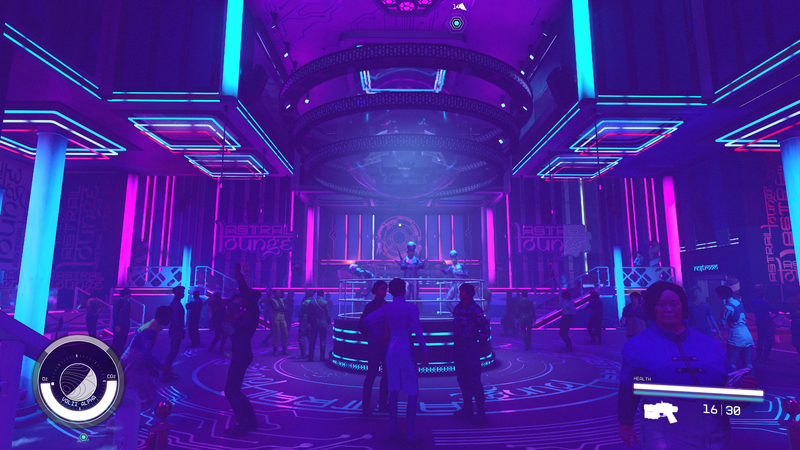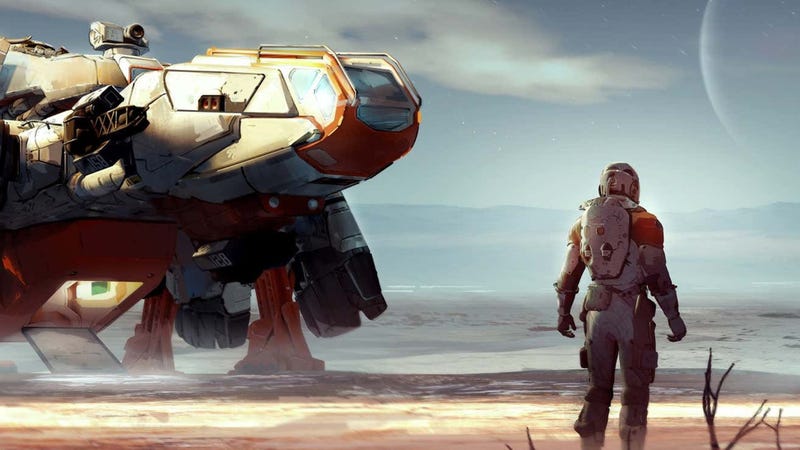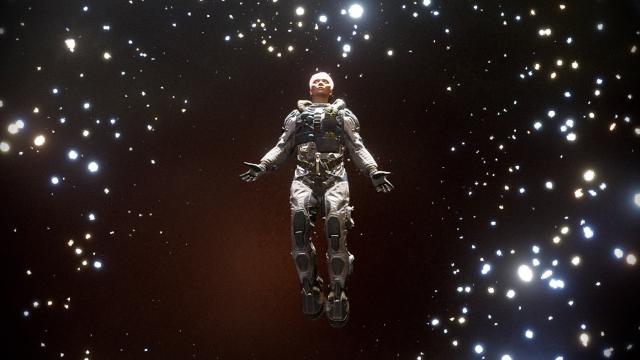In the months (nay, years) leading up to Starfield’s September 6 release, the hype for the Bethesda RPG grew and grew until it was a heretofore unseen beast, a giant Kaiju of expectation that threatened to take down Sony, upend 2023’s GOTY race, and suck up all of gamers’ precious free time.
Ahead of its launch, game director Todd Howard and Xbox head Phil Spencer were a dynamic duo, showing up at Summer Game Fest together to expound on the awesome power that Starfield would showcase, the 1,000 planets you could step foot on, the bugs you almost certainly wouldn’t encounter. That same weekend, Starfield got its own 45-minute-long “Direct” presentation during the Xbox Showcase, and a physical version of the expensive Constellation Edition sat behind a glass case at the event itself.
Head of Xbox Creator Experience Sarah Bond joined in on the fun, calling Starfield “one of the most important RPGs ever made.” Bethesda head Pete Hines said it took him well over 100 hours to properly start Starfield. All of the hype whipped Xbox fans into a frenzy, and indirectly fueled the flickering flames of the console wars. Starfield’s scope, its potential, even made the then-unreleased game a talking point in the FTC trial regarding Microsoft’s purchase of Activision-Blizzard.
Then, after a few days in what Bethesda dubbed “early access,” available to deep-pocketed players who shelled out big bucks for one of several premium editions, Starfield launched. It is surprisingly not buggy, and jam-packed with side-quests that offer a steady drip of serotonin. But it’s woefully inaccessible, its UI is daunting, and it is, ultimately, just a new Bethesda game. There’s nothing wrong with that, but it’s a stark reminder that hype trains are just marketing tools in a different font. Starfield is a good game, but it is not a groundbreaking one.

Starfield and serotonin
Before I got a chance to dive into Starfield, I wondered aloud (and on social media) if the game would occupy a similar space in my life that Skyrim has held on more than one occasion. Skyrim never floored me and never lingered after I powered off my console, unlike Marvel’s Spider-Man’s version of Manhattan, or story beats in Mass Effect 2. But every time I dropped back into Skyrim, I fell into the same satisfying loop, emerging from a lengthy play session a little dazed, uncertain of the time, blinking to reaccustom my eyes to the real world outside of its pixels.
Every time I jumped into Skyrim I’d go off searching for some tucked-away relic or NPC in need of help and end up climbing to the top of a peak I saw in the distance, or scurrying through caves like a little gamer Gollum, furiously lining my pockets with shiny objects. I’d “just one more side-quest” myself into the wee hours of the morning, surreptitiously pulling tokes from a pre-roll resting on the table in front of me. No matter what I did, whether it was becoming a vampire or participating in a drinking competition, I was never blown away or taken aback by what Skyrim unfurled before me—I was, however, hooked.
I’m about 20 hours into Starfield and can safely say it is exactly like Skyrim in space. The steady serotonin drip of overhearing a conversation, marking the quest associated with that conversation on my map, completing it, then going back to the list and selecting the next thing is unparalleled. It is the kind of game that completionists salivate over, the kind that I find myself longing to return to and get lost in during my workday, on the train home, while finishing off a workout.
After progressing the main campaign a bit, I violently veered into side-quest territory, spending nearly four hours straight on the Blade Runner-esque planet Neon. I joined a gang, I helped Starfield’s version of Björk recover her music, I tried to console a grief-stricken widow in the shadow of a fish corpse. I paid for VIP lounge access at a bar, helped squash a squabble over a robot that had been vandalized, and rented a room in a hotel just to say I did. Starfield has hooked me in a way that only Bethesda games can, because it is so thoroughly a Bethesda game with a shinier coat of paint.

Expectation versus reality
There is nothing wrong with Starfield feeling familiar—Bethesda’s formula works, and has for over two decades, so I’m not crucifying Todd Howard for refusing to reinvent the wheel. I am, however, noting that there’s a clear disconnect between calling a game “one of the most important RPGs ever made” and that game then reusing long-existing RPG gameplay mechanics and storytelling techniques throughout.
As Kotaku’s Zack Zweizen points out, Starfield is “still a Bethesda RPG. You can almost feel the ancient bones of Morrowind and Fallout 3 poking through bits of the scenery and menus as you play.” Companions still linger behind NPCs chatting you up, players are still almost always overencumbered, enemies still fall over like action figures when you send a gust of gravity their way that feels almost exactly like Skyrim’s Dragon Shouts.
There’s nothing groundbreaking about Starfield, save for maybe its scope, which is possible largely because of the technological advances that have taken place within the last several years, and are now readily available in consumer-facing products like the Xbox Series X/S and modern PCs.
But as for Starfield bringing new ideas to the genre, or adding anything new to its well-worn formula…it doesn’t. Bethesda has been quietly moving its own role-playing goalposts closer to the more shallow end ever since The Elder Scrolls IV: Oblivion, narrowing the scope of what the player can actually influence, placing you in a world that feels perfectly carved out for you to slot into, its problems cleanly laid out for you to solve. Cian Maher’s quote from an Oblivion piece for TheGamer comes to mind: “I also don’t reckon Skyrim ever managed to carve out a portion of its world and imbue [it] with the necessary narrative significance for a conclusion to not seem like deus ex machina.”
Aside from ship-building mechanics that borrow heavily from No Man’s Sky, there aren’t any shiny new gameplay additions in Starfield. Building an outpost is just Fallout base-building, leveling your lockpicking or melee abilities follows similar logic to Skyrim, and there are many eerie similarities to Obsidian’s The Outer Worlds. The most noted difference comes not in an updated role-playing system or deeper NPC interactions, but in gunplay—Starfield improves upon Bethesda’s infamous combat clunkiness, and it’s welcome.
But Starfield feels the same way Fallout 4 did, which felt the same way Skyrim did, and that does not make it “one of the most important RPGs” ever made. It just makes it a good Bethesda game, a game made by a studio that Microsoft spent $7.5 billion to acquire. We’d do well to remember that, both as consumers and critics, going forward.
Image: Bethesda, Xbox

Leave a Reply